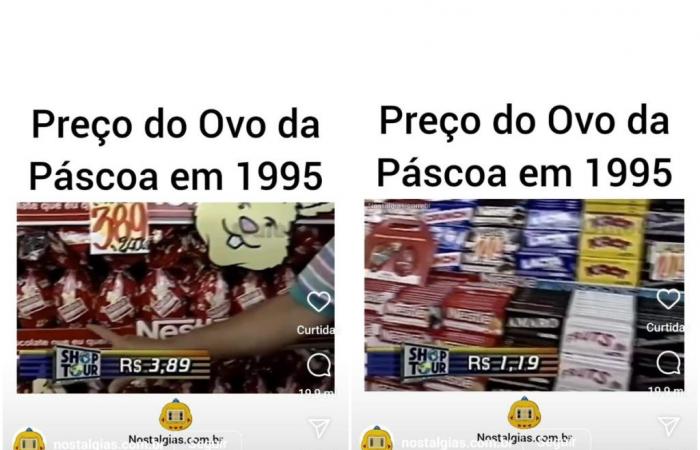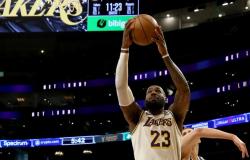
Year after year, the prices of Easter eggs attract the attention of consumers – and the increase perceived by the population is not just an impression. According to a survey carried out between January and February by Horus, a market intelligence company, chocolate is more expensive compared to last year. According to the study, chocolate bars saw an average price increase of 11%, while eggs rose 1.8%.
In this context, a 1995 report, which shows the prices of Easter eggs at the time, went viral on social media. Published on March 4, the video has already reached 15.6 million views on Instagram. In the video, you can see a 240g Nestlé egg costing R$3.89, chocolate bars starting at R$1.19 and a box of Bis for R$0.79.
>> Follow the PEGN channel on WhatsApp and receive exclusive news
Today, the same Nestlé egg, weighing 200g, can be found for as little as R$40 in marketplaces and supermarket chains. The Nestlé bar, 50g less than the 1995 version, is sold for around R$8, and a box of Bis costs an average of R$6.
What explains the increase in Easter egg prices?
In the comments, users expressed nostalgia for the time and sought explanations for the price difference. According to André Braz, coordinator of FGV Ibre’s Price Indices, the increase is associated with inflation accumulated over the years, in addition to the evolution of the eggs themselves, which leads to greater added value to the products.
“According to IBGE’s IPCA, accumulated inflation from January 1995 to February 2024 is 574.72%. So, a product that cost R$3.89 at that time would now cost R$26.25, if corrected for this accumulated inflation”, explains Braz. Furthermore, the expert points out that the products have changed, with gifts, accessories and more elaborate customizations. “All the sophistication, which makes the product more suitable for the current era, has a price, which is reflected in the final cost for the consumer”, he states.
Furthermore, Braz points out that, in May 1995, the minimum wage in Brazil was R$100. Thus, the price of the Easter egg presented in the video compromised 3.89% of income. Currently, if the price of a similar egg is considered (around R$40), the amount paid for the sweet would be the equivalent of 2.83% of the current minimum wage, of R$1,412.
The coordinator of FGV Ibre’s Price Indices also highlights that it is important for consumers to consider what is ideal for their own reality. “It is up to consumers to make the appropriate value judgment. As it is not a basic product, it can reach very high values, as price formation is not guided solely by inflation. However, no product survives consumer criticism. If he feels harmed by the price, he inevitably helps to regulate the price downwards, as it is a perishable product, which needs to be sold during the commemorative date”, he concludes.
Do you want access to exclusive content from PEGN? Just click here and sign!
Tags: Easter egg R3 .89 Video showing prices #90s viral understand variation Social media
--




